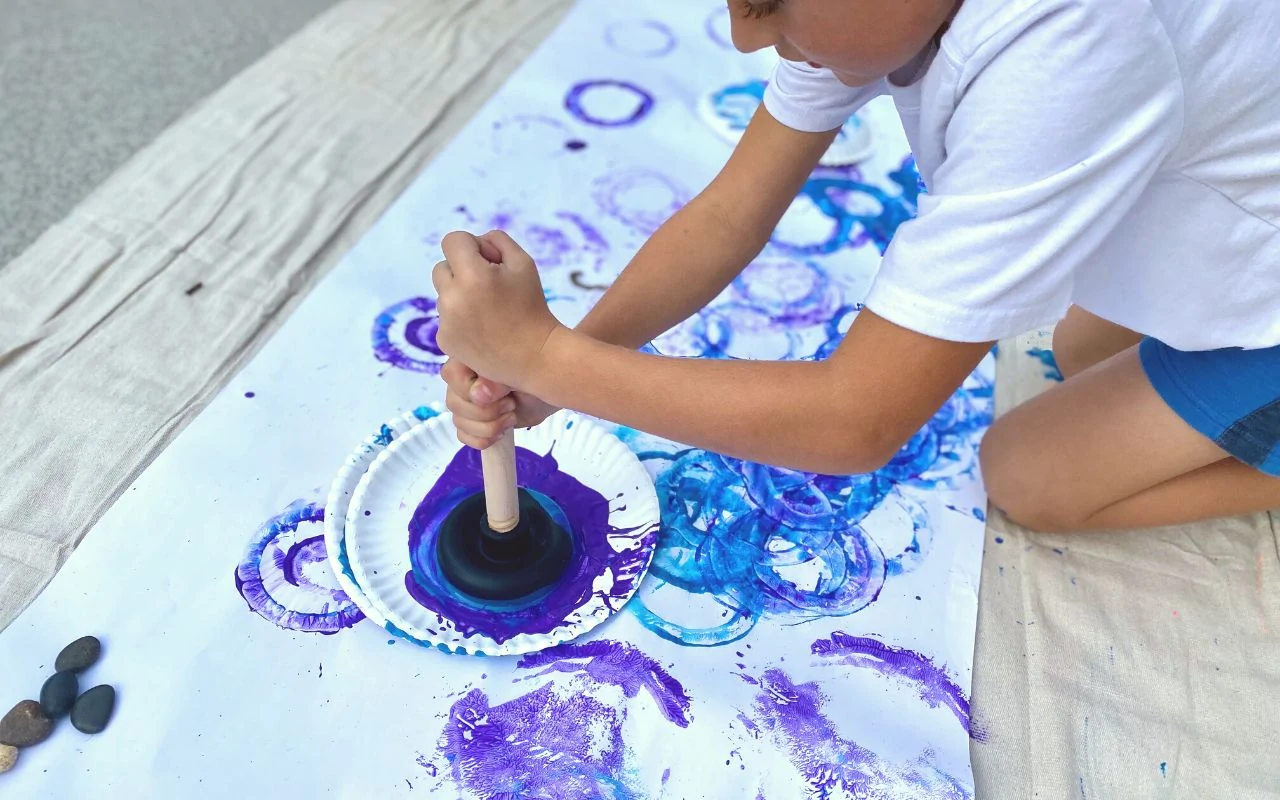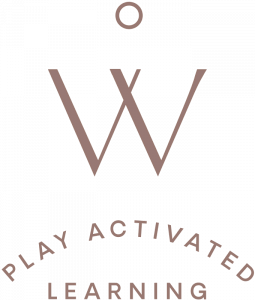This fun Play Invitation is always one of children’s favorites. It mixes movement, sound, and mark making!
A plunger is a common household item that not all children are familiar with. And although they may not understand its function, they certainly will have fun discovering the marks it produces, the sounds it makes, and the physical activity involved. This is also a great example of one of the many different ways to manipulate and move paint, and an opportunity to develop spatial awareness and kinesthesia (awareness of the position and movement of body parts).
What Could Lead Us to This Play Invitation
- Children have been curious about lines, circles, and new ways of creating marks;
- Children are excited about playing with sound and movement (especially suction, pulling and pushing);
- Children have been exploring their physical abilities like coordination, strength, and flexibility.
Materials Needed
- Tempera paints
- Kraft paper
- Sink plunger
- Trays or paper plates
Setting up This Play Invitation
- Place a drop cloth on the ground, and lay bulletin board paper on it. Depending on the plunger, you may need to use thicker paper or cardboard instead of kraft paper.
- Pour the tempera paint into trays or on paper plates, one per color.
Tips: This Play Invitation MUST be done outside, as the paint will fly when the plunger lifts off the paper!
How to Create the Painting
- Invite children to plunge the paint onto the paper. This process provides a great energy release!
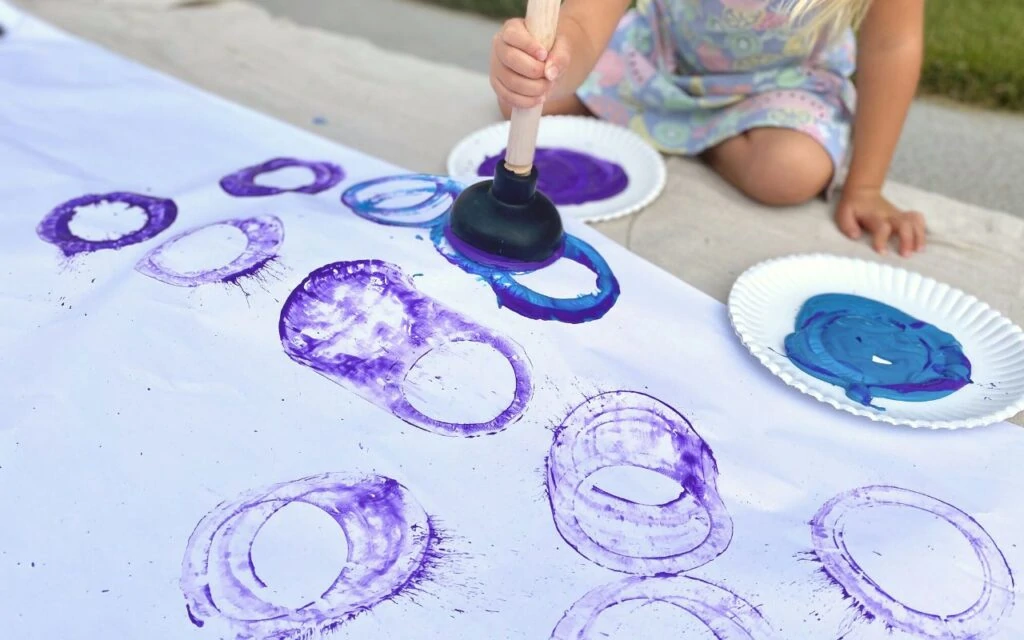
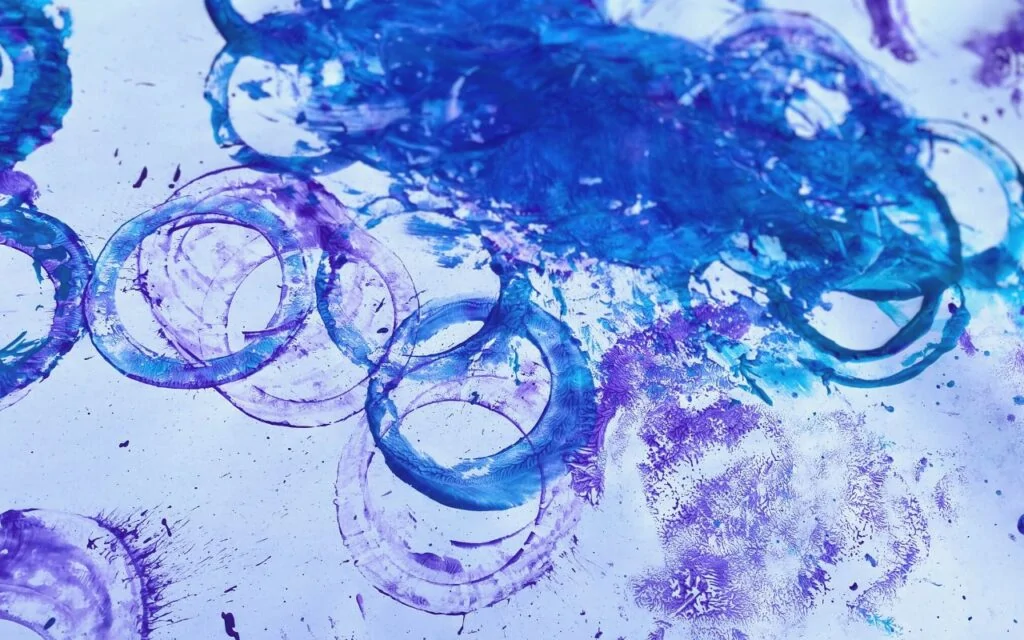
Optional Next Step: Play music and ask children to create marks along with the beat.
How to Nurture the Natural Unfolding of the Child’s Identity During This Play Invitation
- Children have the right to make a mess. In children’s exploration of the world, there will be a lot of uncoordinated movements, a lot of bouncing ink, a lot of emotion, and a lot of intensity. Such is childhood. Children focus more on the experience they are having than on the organization of the environment around them. That’s why creating spaces and moments where they can explore without restraint, and accepting the mess that follows, is an essential part of the process.
- Children have the right to have their work valued. Honor children’s work by documenting it not just to respond to families’ curiosity but also for your reflective practice. While exploring a Play Invitation like this, several learning paths and Big Ideas will become visible in the narratives, interactions, and movements. Recording this process contributes to your knowledge of the group and each child’s self-image, and so that you and your community can better understand the value of the experience.
The Academic Learning Opportunities
- MATH: Develop directionality and spatial awareness, and geometry.
- LANGUAGE: Build new vocabulary, using language to share ideas.
- PHYSICAL: Develop hand-eye coordination, flexibility, and core and back strength.
- ART: Develop imagination and creativity, and engage with new materials and techniques.
Extension
Go on a scavenger hunt to look for things that create circular marks with paint.
Book Recommendation
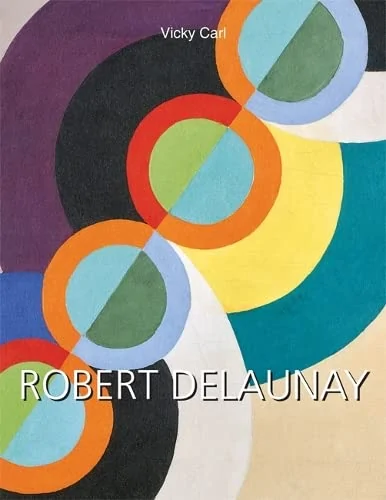
A beautiful book that takes us into Robert Delaunay’s world of circular shapes.
